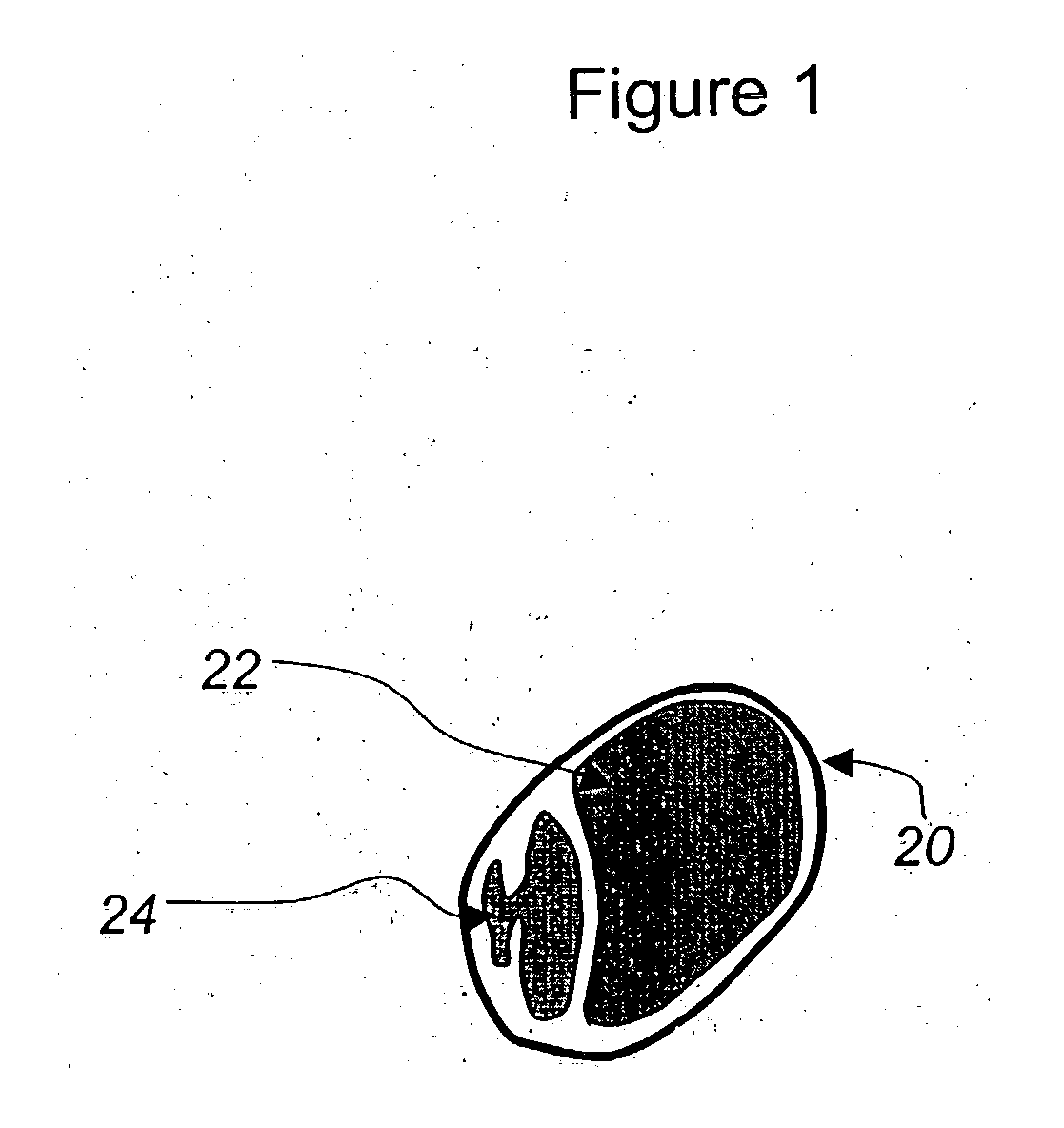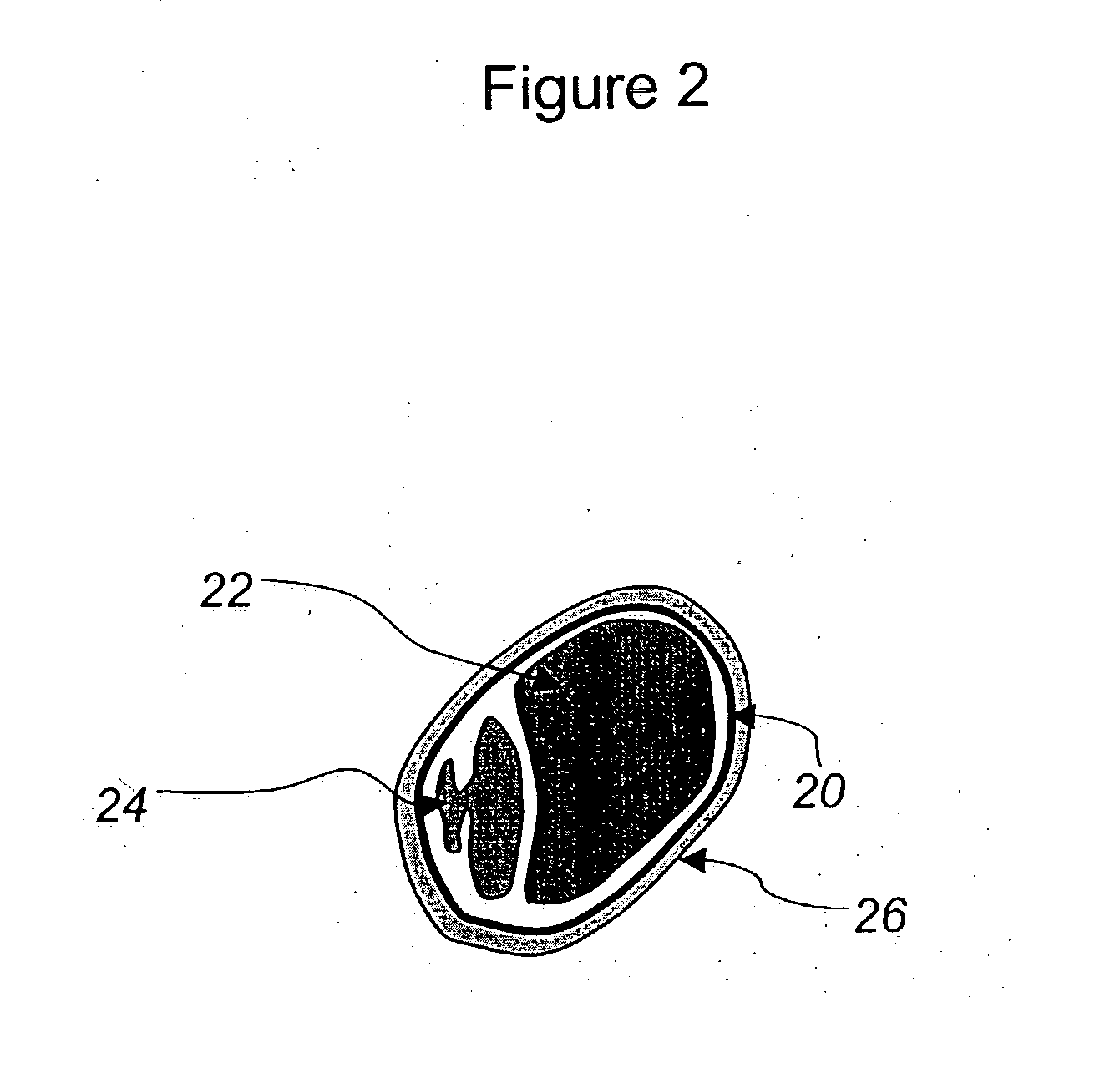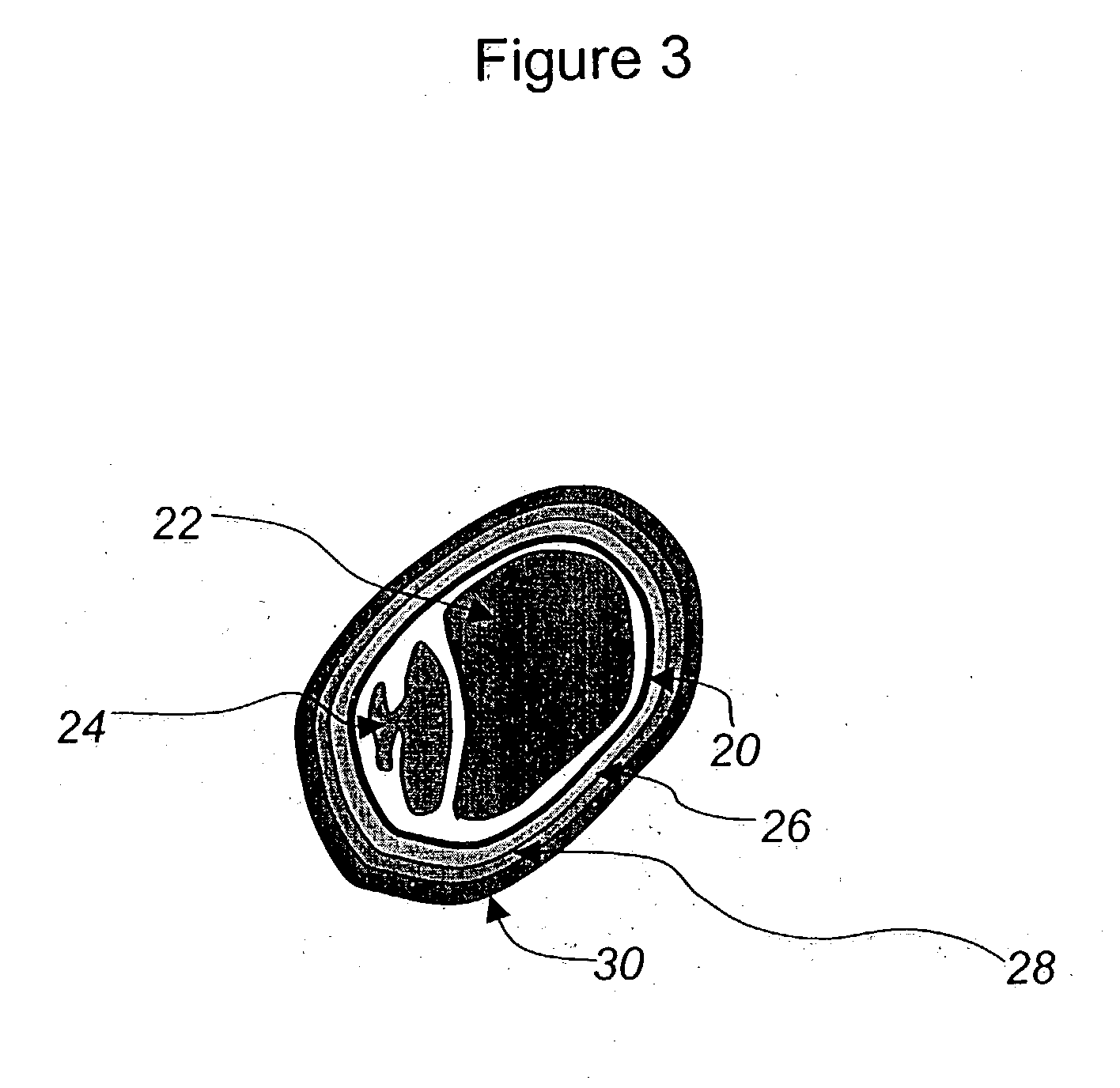Agricultural seed having protective coatings
a technology of protective coating and seed, applied in the direction of biocide, plant growth regulator, fertiliser form, etc., can solve the problems of seed being adversely affected, seed being susceptible to bacterial and fungal damage, and seed coat providing some protection, but often inadequate,
- Summary
- Abstract
- Description
- Claims
- Application Information
AI Technical Summary
Problems solved by technology
Method used
Image
Examples
Embodiment Construction
[0037] Coated seeds comprising a first protective polymer film coating selected from the ingredients listed in Table 1, and a secondary growth augmentation coating selected from the ingredients listed in Table 2 were prepared according to the following percentages by weight.
1 TABLE 1 Primary Polymer (CAP / other) 30-90% Secondary Polymers 0-45% Plasticizers 0-35% Binders 0-35% Surfactants 0-20% Glidants 0-15% Pigments 0-1%
[0038]
2 TABLE 2 Primary Nutrients 0-60% Secondary Nutrients 0-5% Hormones 0-1% Insecticides / Pesticides 0-25% Herbicides 0-25% Fungicides 0-25% Bactericides 0-25% Pigments 0-1% Binders 0-30% Surfactants 0-20% Glidants 0-20%
[0039] It is to be understood that the foregoing description comprises a preferred embodiment of the present invention. It should be apparent to those of skill in the art that certain advantages have been achieved; it should also be apparent to those of skill in the art that various modifications, adaptations, and alternative embodiments thereof may...
PUM
| Property | Measurement | Unit |
|---|---|---|
| temperature | aaaaa | aaaaa |
| viscosity | aaaaa | aaaaa |
| temperature | aaaaa | aaaaa |
Abstract
Description
Claims
Application Information
 Login to View More
Login to View More - R&D
- Intellectual Property
- Life Sciences
- Materials
- Tech Scout
- Unparalleled Data Quality
- Higher Quality Content
- 60% Fewer Hallucinations
Browse by: Latest US Patents, China's latest patents, Technical Efficacy Thesaurus, Application Domain, Technology Topic, Popular Technical Reports.
© 2025 PatSnap. All rights reserved.Legal|Privacy policy|Modern Slavery Act Transparency Statement|Sitemap|About US| Contact US: help@patsnap.com



